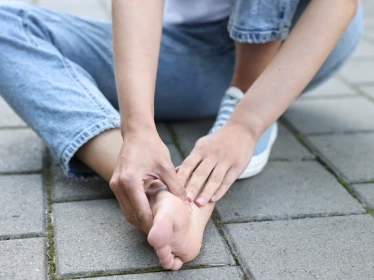
What is plaque?
Plaque is a clear, sticky film that is constantly forming in our mouths, made up mostly of bacteria. It's that slimy film you feel on your teeth when you wake up in the morning, or that fuzzy coating after eating.
How is plaque harmful to our oral health?
The bacteria in plaque thrive on carbohydrates or sugars that we eat. They produce acid that weakens the tooth surfaces leads to cavities.
Plaque also forms along the gum line and when not removed, irritates the gums causing inflammation. This then leads to a whole other list of problems!
What can happen if we allow plaque to build up?
Plaque that is not brushed away hardens over time to form calculus, or tartar. This is very difficult to remove at home.
Build-up of plaque also means constant irritation of the gums and acid production that can lead to cavities. When the gums get irritated by plaque, they become inflamed and pull away from the teeth - producing pockets between the tooth surface and gum. Plaque and calculus can continue to build-up in these pockets and underneath the gums. When that happens, a whole sequelae of events can occur - bleeding, cavities, swollen gums, pain, receding gums, bone loss, shifting of teeth, loose teeth and eventual tooth loss!
Plaque build up is also not a good look on teeth, imagine a mouth of teeth with gooey yellowy plaque instead of clean, smooth surfaces. Brushing can be a pain too when your red, puffy, inflamed gums start bleeding!
How can we prevent plaque from building up?
Simple - practise good oral hygiene at home! Brush well!
- Brush twice a day with a soft bristled toothbrush and toothpaste containing fluoride for at least 2 minutes.
- Make sure to brush every surface of your tooth - outside, inside, biting surface, between teeth.
- Don't forget to floss too! Plaque builds up between the contact points of teeth, where toothbrush cannot reach, so flossing is needed to break through and loosen any foods and plaque.
Dentist's Tips
After you brush your teeth, here's how you can check if you've done a good enough job: Use your tongue to run through your teeth (especially the back teeth surfaces facing the cheeks). If it feels fuzzy or rough, continue brushing (gently) in that area until it feels smooth!
You could also use your fingernail to scrape your teeth (please only do this at home and wash your hands properly before and after doing this!!) If gunk and plaque is visible, then you need to go back and continue brushing!
If your teeth still doesn't feel smooth after brushing, or there's a hard stone-like feel to it, a visit to the dentist is necessary. Even with good oral hygiene, bi-annual visits are important to make sure that a deep clean is performed and any problem is detected early or prevented.
Happy brushing!
Problems with plaque build-up? Consult with our Healthway Dental dentists!





